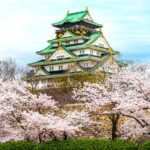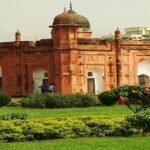
- arrow_back Accueil
- keyboard_arrow_rightBest time to travel to Vietnam
Best time to travel to Vietnam

Best time to travel to Vietnam, a country known for its breathtaking landscapes, rich history, and vibrant culture, offers a unique journey through its bustling cities, tranquil countryside, and stunning coastlines. However, determining the best time to visit can be tricky due to its geographical diversity and varied climate zones. This guide aims to simplify your planning process, ensuring your trip to Vietnam is as fulfilling as possible.
Vietnam’s Climate Overview
Vietnam stretches over a thousand miles from north to south, with a climate ranging from tropical in the south to temperate in the north. Its weather patterns are influenced by monsoon seasons, which can significantly affect the best times to visit different regions of the country.
Northern Vietnam
Northern Vietnam, including Hanoi, Ha Long Bay, and Sapa, experiences a distinct winter and summer season. Winters (November to April) are cooler and can be misty, especially from December to February, while summers (May to October) are hot and humid, with the highest rainfall occurring in July and August.
Best Time for Northern Vietnam
The optimal time to visit Northern Vietnam is during its spring (March to April) and autumn (October to November) when the weather is pleasant with milder temperatures and less rainfall, ideal for exploring the region’s natural beauty and historical sites.
Central Vietnam
Central Vietnam, home to Hue, Da Nang, and Hoi An, has a more tropical, wet climate with a rainy season from September to December and a dry season from January to August. The central coast experiences hot, dry weather from February to August, making it perfect for beachgoers.
Best Time for Central Vietnam
The best months to visit Central Vietnam are from February to April, when temperatures are moderate and rainfall is minimal, providing excellent conditions for sightseeing and enjoying the beaches.
Southern Vietnam
The climate in Southern Vietnam, including Ho Chi Minh City and the Mekong Delta, is warm year-round, with a distinct wet and dry season. The wet season runs from May to November, while the dry season spans from December to April.
Best Time for Southern Vietnam
Travelers will find the dry season, particularly from December to February, to be the most comfortable time to visit Southern Vietnam, as the weather is warm and humidity is lower, making it ideal for exploring urban and rural areas alike.
Vietnam’s Peak and Off-Peak Seasons
Understanding Vietnam’s tourist seasons can help you avoid crowds and enjoy lower prices. The peak tourist season coincides with the dry season in most regions, especially around Tet (Vietnamese New Year) in late January or early February, when the country is bustling with festivities.
Traveling during the shoulder seasons (April to June and September to November) can be advantageous, as you’ll encounter fewer tourists and enjoy more favorable weather conditions, particularly in the north and central regions.
Cultural Events and Festivals
Vietnam’s cultural calendar is filled with festivals that offer insight into the country’s traditions and provide colorful, unforgettable experiences, including:
- Tet Nguyen Dan (Vietnamese New Year): The most significant festival across Vietnam, celebrating the lunar new year with traditional foods, family reunions, and vibrant street decorations.
- Hue Festival: A biennial event that showcases the rich heritage of Hue with cultural performances, art exhibitions, and historical reenactments.
- Mid-Autumn Festival: A family-oriented festival where children participate in lantern parades and enjoy mooncakes, celebrated across Vietnam but particularly festive in Hanoi and Ho Chi Minh City.
Planning your visit to coincide with these events can enrich your travel experience, offering a deeper understanding of Vietnam’s cultural identity.
Travel Tips for Vietnam
- Pack Accordingly: Depending on the region and season of your visit, pack clothes that can handle a range of weather conditions.
- Stay Hydrated: The climate can be hot and humid, especially in the south and during the summer months, so drink plenty of water.
- Respect Local Customs: Vietnam has a rich cultural heritage. Showing respect towards local traditions and practices will enhance your experience.
Summary
The best time to travel to Vietnam varies significantly depending on the region you plan to visit and what you want to do. For cooler weather and cultural experiences, consider visiting during spring or autumn. If beaches and sunshine are your priorities, the dry season will be ideal. By aligning your travel plans with the country’s climate and cultural events, you’re sure to have a memorable journey exploring the vibrant landscapes and rich history of Vietnam.
Popular
- Thailand
- Vietnam
- Dubai
- Bali
- Autour du globe
- Terms-conditions
- Contacts
- Privacy-policy
- About US
About us
Are you ready to trade the everyday for extraordinary experiences? This travel blog is your one-stop shop for crafting the perfect summer escape.
Contact us : info@coyotrip.com








